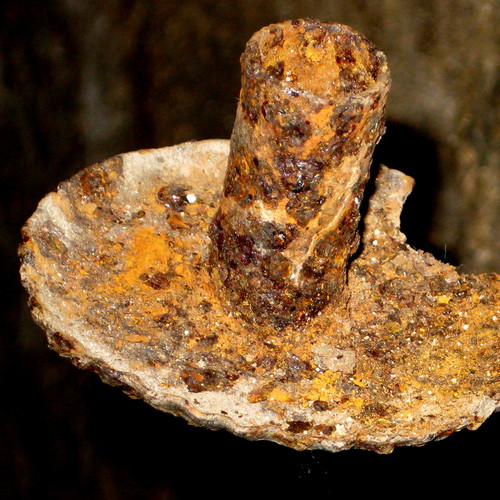The Former Synagogue's Mikvah
Like practically every synagogue, the one in Obernbreit also had a mikvah. Two written sources about its condition are known until now: the correspondence of the district rabbi of Kitzingen and the chronicle of the Sänger family. On April 4, 1898, District Rabbi Adler writes: "The synagogue is very beautiful, the ritual bath leaves much to be desired." The Obernbreit congregation apparently took the advice to heart and repaired the unspecified defects. For the costs they sought a subsidy from the regional association.
The author of the chronicle of the Sänger family writes around 1925: "On the east side is the courtyard. From this a staircase led to the mikvah which was well furnished and also had a fountain. I have never seen the furnishings, but I know that the mikvah was renovated in 1895. It was rarely used. Today it lies forgotten and I believe that the current owner of the synagogue has not yet found his way to it."
In fact, around the year 2000, there were only vague hints that "down there" (in the southwest corner of the cellar) was a "Judenschwemm" (Schwemm is the lokal expression for the shallow spot of rivvers and brooks where horses and sheep were driven to get them clean of mud. So "Judenschwemm" is the pejoarative expression for Jewish bath). Nothing could be seen. Where today in the cellar the shaft to the mikvah stairs is covered with a grating, the floor seemed to be made of tamped clay, as in the entire cellar. Inspired by the rumor about the "Judenschwemm," a graduate student tried to poke a hole in the supposed clay floor directly along the wall and lower a camera down. Photographs taken blindly with a remote release showed a larger cavity, at the bottom of which was a small waterhole and a few preserved steps.
On the east wall, a bricked-up opening was still visible, which was thought to be the entrance to the mikvah "from the little courtyard" mentioned by Sänger. Here, in 2006, some members of the association began to uncover the mikveh. In 2007, the excavation work reached the immersion basin. The groundwater found was silted, but not in the least brackish or putrid.
About 450 hours of work were invested in the pure excavation of the mikvah. Another 100 hours were needed for the preparatory work - cleaning of the cellar, etc. With this depth - approx. 9 meters under the building, 45 original steps - and this state of preservation, the Obernbreit mikvah is unique in Lower Franconia.









